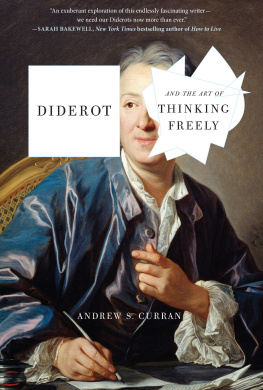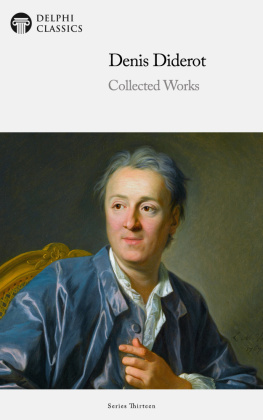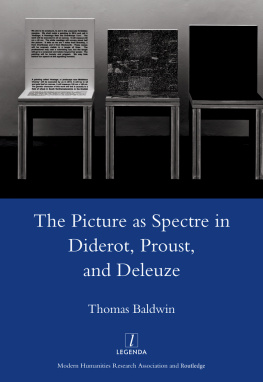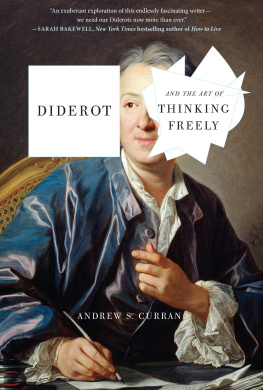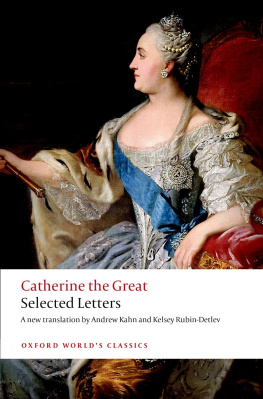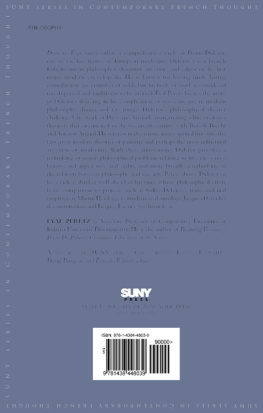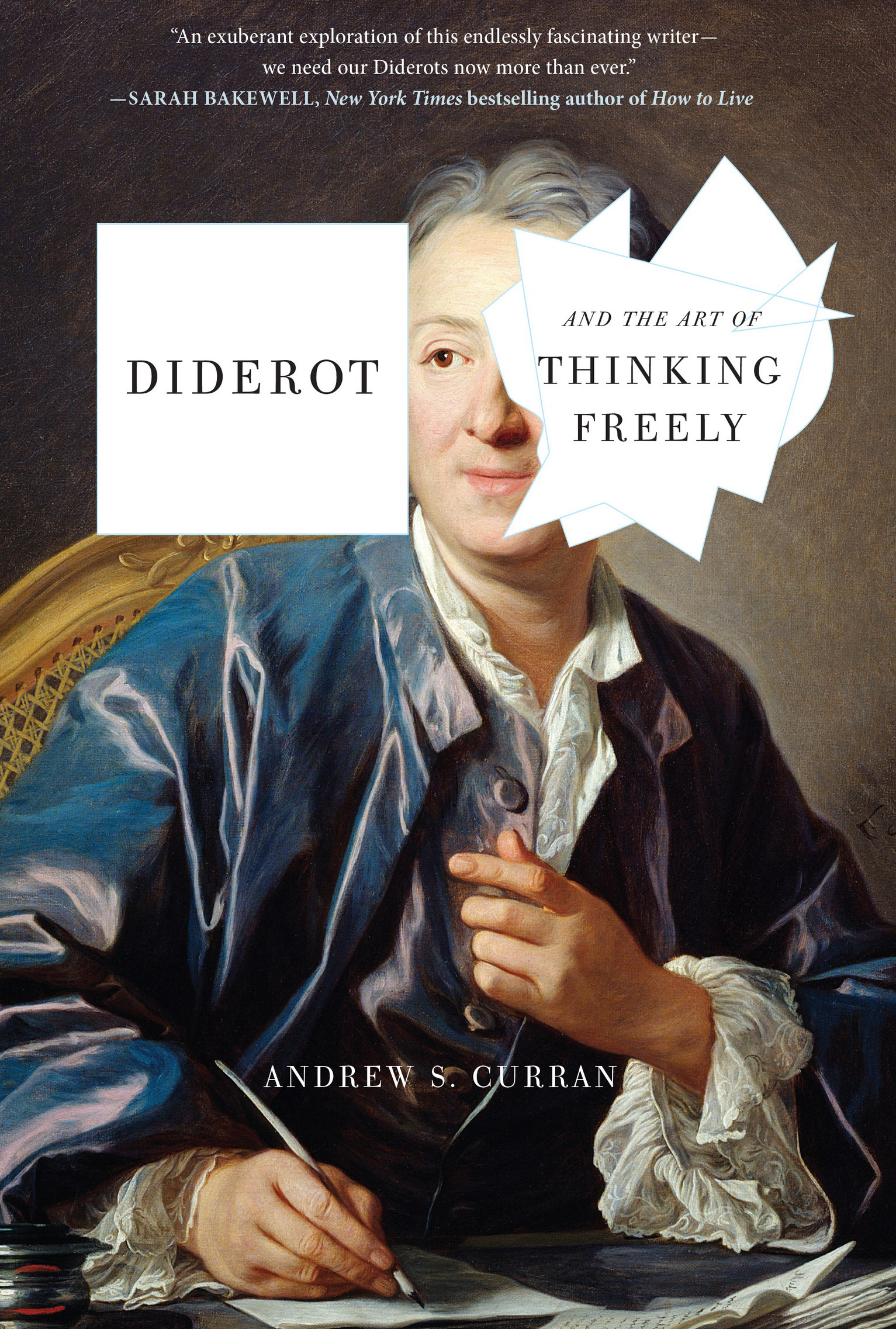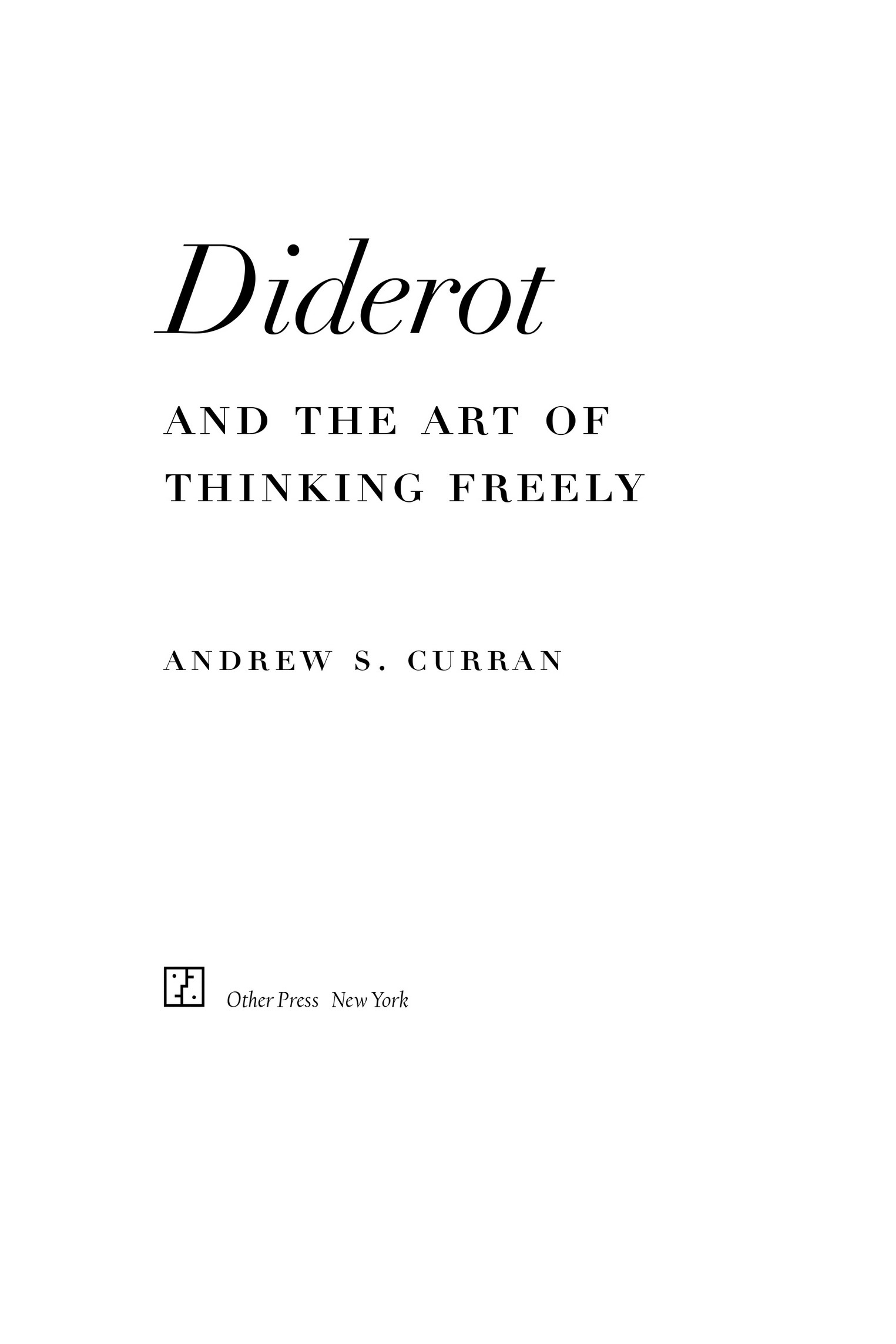Contents
PRAISE FOR Diderot and the Art of Thinking Freely
Curran narrates with verve the story of Diderots life, but also his late masterpieces, unknown in their own time and written for posterity.
SOPHIA ROSENFELD , author of Common Sense
An absorbing sketch of life in eighteenth-century France; it provides dazzling insight into critical issues including the existence of God and freedom of speech.
THIERRY HOQUET , author of Revisiting the Origin of Species
A thrilling narrative that grants the reader an intimate look at Diderots life and intellectual development.
ELENA RUSSO , author of Styles of Enlightenment
This biography is brimming with life ideas of life and the life of ideas.
RIC FASSIN , author of Populism Left and Right
CompellingCurran recaptures the radicalism of the monumental Encyclopdie and other texts that are now cornerstones of the Enlightenment canon.
LAURA AURICCHIO , author of The Marquis
Superbly written and impeccably researchedAnalyzing Diderots relentless pursuit of freedom in an era of censorship and fanaticism, Curran uncovers the multiple facets of his genius and his relevance for our times.
OURIDA MOSTEFAI , author of Rousseau and LInfame
ALSO BY ANDREW S. CURRAN
Sublime Disorder:
Physical Monstrosity in Diderots Universe
The Anatomy of Blackness:
Science and Slavery in an Age of Enlightenment
Copyright 2019 Andrew S. Curran
Production editor: Yvonne E. Crdenas
All rights reserved. No part of this publication may be reproduced or transmitted in any form or by any means, electronic or mechanical, including photocopying, recording, or by any information storage and retrieval system, without written permission from Other Press LLC, except in the case of brief quotations in reviews for inclusion in a magazine, newspaper, or broadcast. For information write to Other Press LLC, 267 Fifth Avenue, 6th Floor, New York, NY 10016. Or visit our Web site: www.otherpress.com
The Library of Congress has cataloged the printed edition as follows:
Names: Curran, Andrew S., author.
Title: Diderot and the art of thinking freely / Andrew S. Curran.
Description: New York : Other Press, [2019] | Includes bibliographical references and index.
Identifiers: LCCN 2018019273 (print) | LCCN 2018046590 (ebook) | ISBN 9781590516720 (ebook) | ISBN 9781590516706 (hardcover)
Subjects: LCSH : Diderot, Denis, 17131784. | Philosophers France Biography.
Classification: LCC B 2016 (ebook) | LCC B 2016 . C 87 2019 (print) | DDC 194 dc23
LC record available at https://lccn.loc.gov/2018019273
Ebook ISBN9781590516720
v5.4
a
For Jen
Contents
Prologue
UNBURYING DIDEROT
Sometime during the snowy winter of 1793, under cover of night, a small group of thieves pried open a wooden door leading into the Church of Saint-Roch. Forced entry into the Paris sanctuary was nearly a weekly occurrence during this time of revolution. In the early 1790s, anticlerical vandals had pulled enormous religious paintings off the walls and slashed the canvases. Other trespassers had made off with more portable works of art, including an exquisite statue sculpted by tienne-Maurice Falconet. On this particular night, however, the intruders came to steal whatever copper, silver, or lead they could find in the crypt located underneath the Chapel of the Virgin. Setting to work in front of the chapels altar, the grave robbers used long iron bars to lever aside the mattress-sized marble slab in the center of the floor. Though they surely had no idea who was buried in the vault, the most loutish of the group, assuming he could read, would still have recognized the name of the writer Denis Diderot inscribed on one of the caskets. Dead for nine years, the notorious atheist had been the driving force behind the most controversial book project of the eighteenth century, the Encyclopdie. This massive dictionary had not only dragged sacrilege and freethinking out into the open, but triggered a decades-long scandal that involved the Sorbonne, the Paris Parlement, the Jesuits, the Jansenists, the king, and the pope.
None of this old history mattered to the burglars. After removing Diderots lead coffin from the vault, the men simply shook his decomposing body onto the churchs marble floor. The following day, Denis Diderots remains (along with the other desecrated cadavers from the crypt) were presumably gathered up and transferred without ceremony to a mass grave about a mile to the east. Nobody noticed; nobody reported it in the press. Assuming the churchs few remaining parish priests had realized that Diderot had been buried in the church, they were undoubtedly relieved to be rid of the scandalous unbeliever.
Some twenty years before his remains were carted out of Saint-Roch, Diderot had prophetically remarked that whether you rot beneath marble or under the ground, you still rot.
Diderots interest in speaking to future generations from beyond the grave had come about out of necessity. In 1749, shortly after the then thirty-four-year-old writer had published a work of intemperate atheism entitled the Lettre sur les aveugles (Letter on the Blind), two gendarmes showed up at his house, arrested him, and dragged him off to Vincennes prison. Three months later, shortly before he was released, the lieutenant-gnral de police made a special trip to the prison to warn the writer that any further immoral or irreligious publications would bring about a jail sentence measured in decades, not months.
Diderot took this threat seriously. For the next thirty-three years, he avoided publishing the kind of inflammatory books that he had authored as a young man. Much of the energy that he might have devoted to such endeavors was redirected toward the all-consuming Encyclopdie. When he finally completed the last volume of illustrations, in 1772, the now-elderly writer was well aware that he was a celebrity throughout Europe and even in parts of North America, but he was not really considered a literary great. His fate, as he admitted quite openly, was perhaps to survive long after his reputation as an Encyclopedist had faded, growing ever older and vanishing without leaving a significant work behind.
Charitable friends blamed the writers supposedly limited literary production on the burden of the Encyclopdie. Others privately ascribed this failing to his famously whirligig brain. As was often the case, the sharp-tongued Voltaire, who both admired and distrusted Diderot, came up with the cleverest remark on the subject; he apparently joked that the Encyclopedists mind was an oven that burns everything that it cooks.
What Voltaire and virtually everybody else did not know was that Diderot had actually written an astonishing range of improbably modern books and essays for the drawer, as the French like to say. Holed up in his sixth-floor garret office on the rue Taranne for the last third of his life, Diderot produced this cache of writing with the hope that it might one day explode like a bomb. This moment was prepared for carefully. When the author reached his sixties borrowed time during the eighteenth century he hired copyists to produce three separate collections of manuscripts. The first and most complete set was entrusted to his daughter, Anglique, whom we know as Madame de Vandeul; a second, less complete group of writings was transferred to his designated literary heir and devotee, Jacques-Andr Naigeon. And six months after his death, thirty-two bound volumes of manuscripts along with Diderots entire library of three thousand books traveled by ship to Catherine the Great in Saint Petersburg.

